Suillus Adans.
A number of species are known in Europe. Fruitbody boletoid without or with partial veil, and then leaving a ring on the stipe. Cap in most species more or less viscid. Stipe solid.
Suillus bovinus (L. : Fr.) Roussel
Description
Cap up to 10 cm, at first hemispherical then expanding to convex, flesh-coloured, yellowish ochraceous, beige, ochraceous, buff or yellowish brown, often with pronounced light pinkish tint, usually viscid, smooth or very finely scaly; cap margin usually paler than the rest of the cap, more or less inrolled at first, later expanding. Stipe, cylindrical clavate, more or less concolorous with the cap, without ring; basal mycelium pinkish. Flesh yellowish white to cream, sometimes in places with pale pinkish tint, not blueing. Tubes dirty yellowish. Pores at first medium sized, then large, angular or irregular, dirty yellowish, yellowish beige to ochraceous yellow. Smell not distinctive. Taste mild. Spores 8–10 ´ 3–4 μm.
Habitat. Coniferous forests, but also in artificial plantations, mycorrhizal with pines (Pinus).
Distribution. Widespread throughout Europe.
Similarity. Probably might be confused with Suillus variegatus, but easily distinguished on the account of the not blueing flesh and viscid cap surface.
Photographs
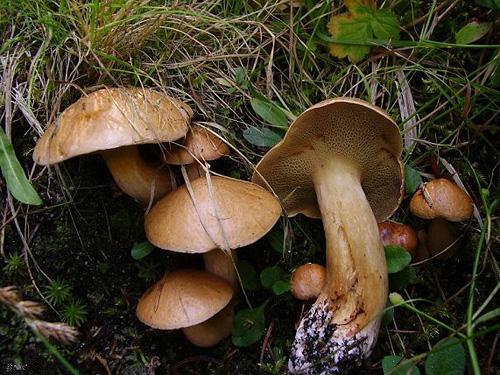
Fruitbodies of different ages of Suillus bovinus. (photo P. Nedelev)
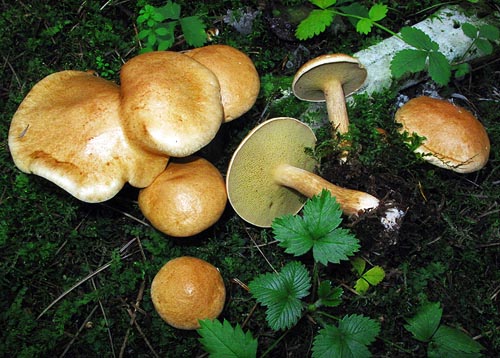
Fruitbodies of Suillus bovinus. (photo G. Konstantinidis)
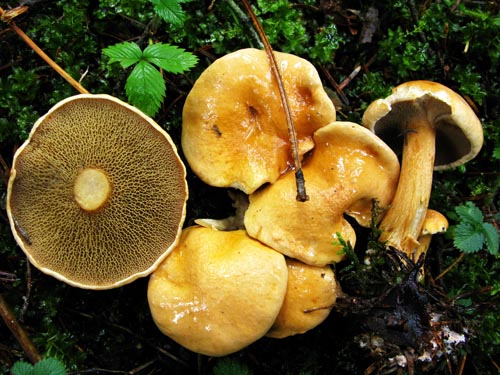
Fruitbodies of Suillus bovinus. (photo G. Konstantinidis)
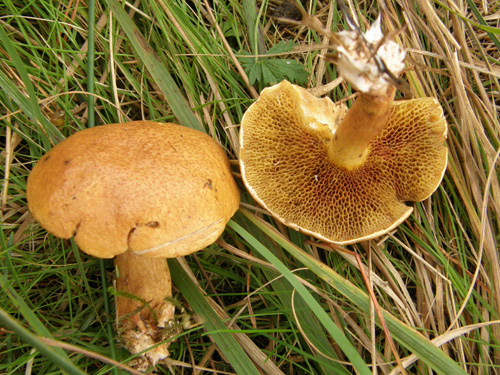
Fruitbodies of Suillus bovinus. (photo B. Assyov)
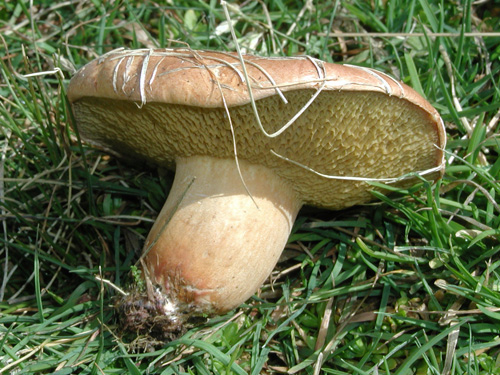
Fruitbody of Suillus bovinus. Note the flesh-coloured stipe and cap. (photo B. Assyov)
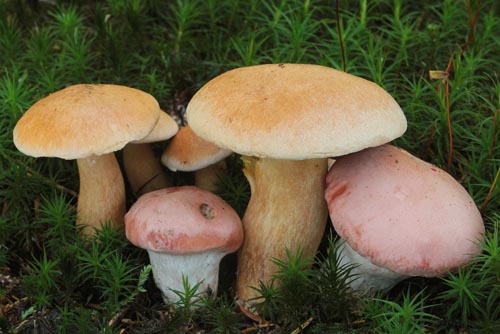
Fruitbodies of Suillus bovinus and Gomphidius roseus. The two species normally occur together. (photo M. Mikšík)
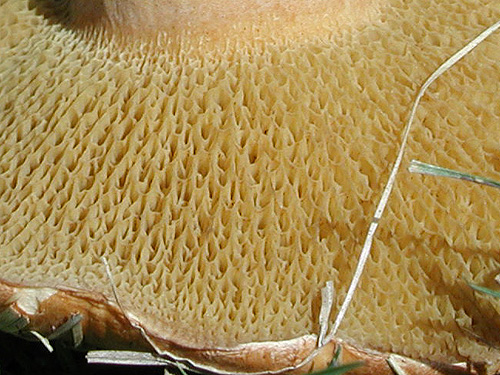
Pore surface of Suillus bovinus. Note the uneven pattern. (photo B. Assyov)
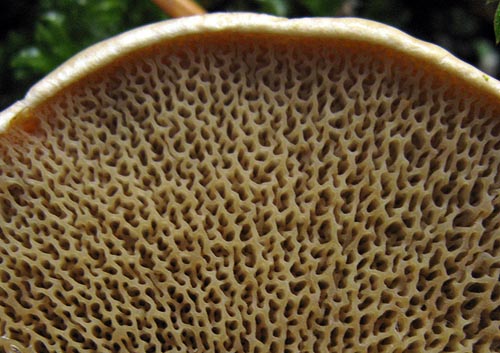
Another detail of the pores of Suillus bovinus. Note the colour. (photo G. Konstantinidis)
Important literature
Alessio, C.L. 1985. Boletus Dill. ex L. (sensu lato). – In: Fungi Europaei. Vol. 2. Pp. 1–705. Libreria editrice Biella Giovanna, Saronno.
Breitenbach J. & Kränzlin F. 1991. Pilze der Schweiz. Bd. 3(1). Röhrlinge und Blätterpilze. Verlag Mykologia, Luzern.
Estadès, A. & Lannoy, G. 2004. Les bolets européens. – Bulletin Mycologique et Botanique Dauphiné-Savoie 44(3): 3–79.
Galli, R. 1998. I Boleti. Atlante pratico-monographico per la determinazione dei boleti. Edinatura, Milano.
Hansen, L. & Knudsen, H. 1992. Nordic Macromycetes. Vol. 2. Polyporales, Boletales, Agaricales, Russulales. Nordsvamp, Copenhagen.
Knudsen, H. & Vesterholt, J. [eds.]. 2008. Funga Nordica. Nordsvamp, Kopenhagen.
Lannoy, G. & Estadès, A. 2001. Les Bolets. Flore mycologique d’Europe. Documents Mycologiques Mémoire Hors série no. 6. Pp. 1–163. Association d’Écologie et de Mycologie, Lille.
Muñoz, J.A. 2005. Boletus s. l. – In: Fungi Europaei. Vol. 1. Pp. 1–951. Edizioni Candusso, Alassio.
Pilát, A. & Dermek, A. 1974. Hríbovité huby. Československé hríbovité a sliziakovité huby (Boletaceae – Gomphidiaceae).Veda, Bratislava.
Šutara, J., Mikšík, M. & Janda, V. 2009. Hřibovité houby. Čeled’ Boletaceae a rody Gyrodon, Gyroporus, Boletinus a Suillus. Academia, Praha.
Watling, R. 1970. Boletaceae, Gomphidiaceae, Paxillaceae. – In: Henderson, D.M., Orton, P.D. & Watling, R. [eds]. British fungus flora. Agarics and Boleti. Vol. 1. Royal Botanic Garden, Edinburgh.
Watling, R. & Hills, A.E. 2005. Boletes and their alies (revised and enlarged edition). – In: Henderson, D.M., Orton,P.D. & Watling, R. [eds]. British Fungus Flora. Agarics and boleti. Vol. 1. Royal Botanic Garden, Edinburgh.